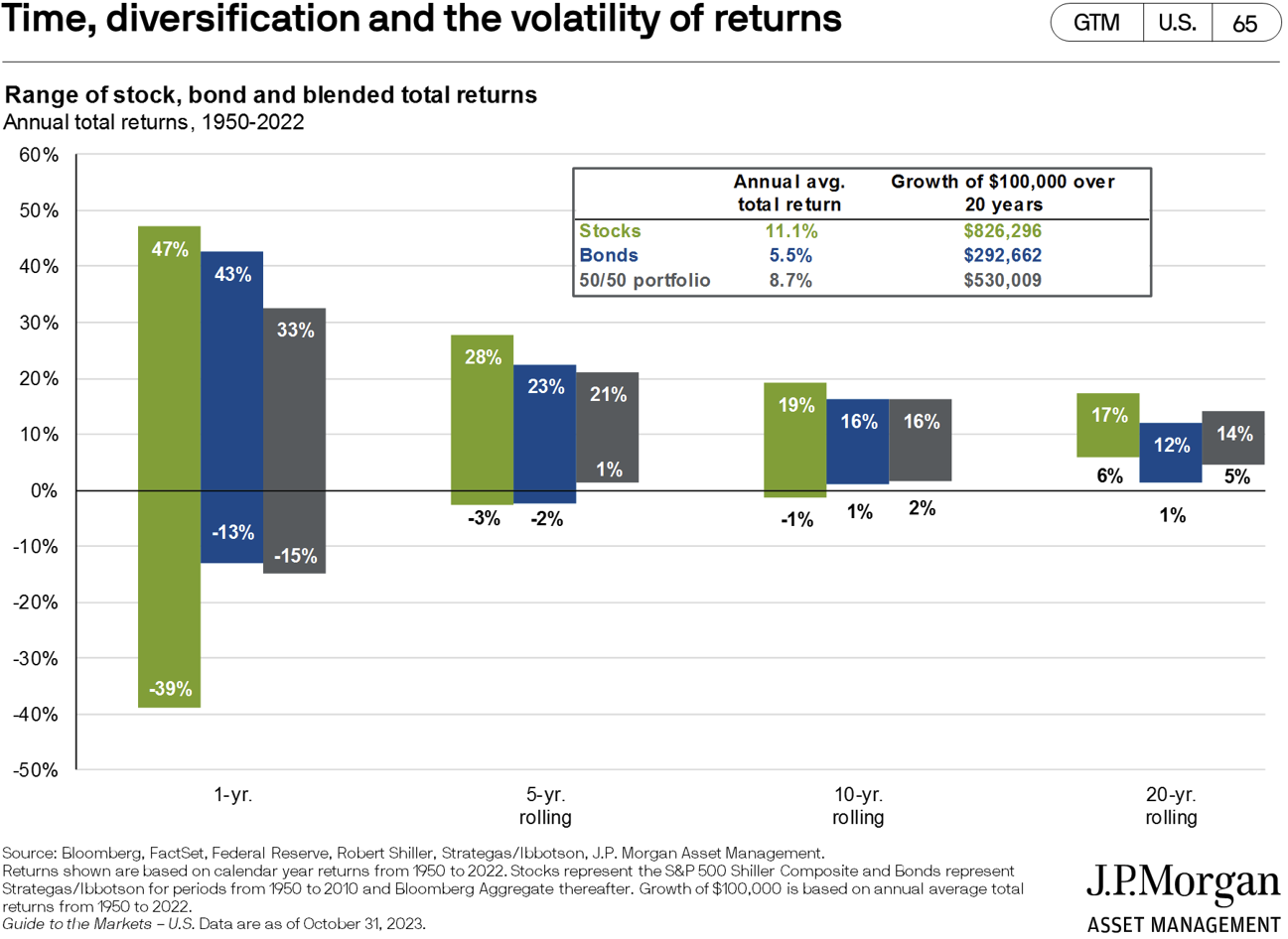
When we refer to investing, what does it mean to say "over time"?
People who trade the stock market frequently aren’t concerned about performance over time. They’re concerned with performance each week, day, or even hour. However, when you’re a long-term investor, reference is often made to how the market performs ‘over time.’ Long-term investing, by definition, implies a longer duration.
Even long-term investors understand that stock markets are volatile. It’s common, for example, for markets to have intra-year losses but still end the year with a positive return.
The chart below1 shows market volatility in one, five, 10 and 20-year rolling periods. As you can see, how the market may perform over longer periods of time is easier to predict than how the market may perform over the next 12 months.
Over the time periods reviewed in the chart, investors experienced annualized returns in the stock market from +47% to -39%. Over a three-year period, the range falls from +28% to -3%, +19% to -1% over any 10-year period, and +6% to +17% over any 20-year time frame.
If you plug in the bond market, a 50% equities and 50% fixed income portfolio has significantly less volatility over any of the above-cited time frames, but volatility nonetheless.
Thus, we almost always discount short-term volatility when discussing returns over time. Admittedly, it’s not always easy, but focusing on longer time frames makes the journey less stressful.
1 “Time, diversification and the volatility of returns.” Slide 65, Guide to the Markets, J.P. Morgan. October 31, 2023.
Please remember that past performance may not be indicative of future results. Different types of investments involve varying degrees of risk, and there can be no assurance that the future performance of any specific investment, investment strategy, or product (including the investments and/or investment strategies recommended or undertaken by S.F. Ehrlich Associates, Inc. (“SFEA”), or any non-investment related content, made reference to directly or indirectly in this newsletter will be profitable, equal any corresponding indicated historical performance level(s), be suitable for your portfolio or individual situation, or prove successful. Due to various factors, including changing market conditions and/or applicable laws, the content may no longer be reflective of current opinions or positions. Moreover, you should not assume that any discussion or information contained in this newsletter serves as the receipt of, or as a substitute for, personalized investment advice from SFEA. To the extent that a reader has any questions regarding the applicability of any specific issue discussed above to his/her individual situation, he/she is encouraged to consult with the professional advisor of his/her choosing. SFEA is neither a law firm nor a certified public accounting firm and no portion of the newsletter content should be construed as legal or accounting advice. A copy of SFEA’s current written disclosure Brochure discussing our advisory services and fees is available upon request. If you are a SFEA client, please remember to contact SFEA, in writing, if there are any changes in your personal/financial situation or investment objectives for the purpose of reviewing, evaluating, or revising our previous recommendations and/or services.


